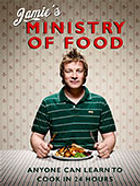- Healthy recipes
- Healthy snacks
- Healthy lunches
- Healthy chicken recipes
- Healthy fish recipes
- Healthy vegetarian recipes
- Main Ingredient
- Chicken
- Pasta
- Vegetables
- Fish
- Beef
- Eggs
- View more…
- Special Diets
- Vegan
- Vegetarian ideas
- Gluten-free
- Dairy-free
- Budget recipes
- One-pan recipes
- Meals for one
- Breakfast
- Desserts
- Quick fixes
- View more…
- Baking recipes
- Cakes
- Biscuit recipes
- Gluten-free bakes
- View more…
- Family recipes
- Money saving recipes
- Cooking with kids
- School night suppers
- Batch cooking
- View more…
- Special occasions
- Dinner party recipes
- Sunday roast recipes
- Dinner recipes for two
- View more…
- 5 Ingredients Mediterranean
- ONE
- Jamie’s Keep Cooking Family Favourites
- 7 Ways
- Veg
- View more…
- Nutrition
- Features
- Cheap eats
- Healthy meals
- Air-fryer recipes
- Family cooking
- Quick fixes
- View more
- How to’s
- How to cook with frozen veg
- How to make the most of your oven
- How to make meals veggie or vegan
- View more
- More Jamie Oliver
- YesChef x Jamie Oliver
- Cookbook Club
- Jamie Oliver Group website
- Jamie Oliver Cookery School
- Ministry of Food
- Vegepedia
Easy homemade curry pastes
Five amazing homemade spicy little numbers
- Dairy-freedf
- Gluten-freegf
- Veganvg
- Vegetarianv

Five amazing homemade spicy little numbers
- Dairy-freedf
- Gluten-freegf
- Veganvg
- Vegetarianv
“My easy curry paste recipes for making a mean korma, jalfrezi, rogan josh, tikka masala and vindaloo ”
DifficultySuper easy
Jamie's Ministry of FoodCurry
Tap For Method
Ingredients
- KORMA PASTE
- 2 cloves garlic
- 5 cm piece of ginger
- ½ teaspoon cayenne pepper
- 1 teaspoon garam masala
- 2 tablespoons groundnut oil
- 1 tablespoon tomato puree
- 2 fresh green chillies
- 3 tablespoons desiccated coconut
- 2 tablespoons ground almonds
- ½ a bunch fresh coriander , (15g)
- 2 teaspoons cumin seeds , for toasting
- 1 teaspoon coriander seeds , for toasting
- JALREZI PASTE
- 2 cloves garlic
- 5 cm piece of fresh root ginger
- 1 teaspoon turmeric
- 2 tablespoons groundnut oil
- 2 tablespoons tomato puree
- 1 fresh green chilli
- ½ a bunch fresh coriander , (15g)
- 2 teaspoons cumin seeds , for toasting
- 1 teaspoon brown mustard seeds , for toasting
- 1 teaspoon fenugreek seeds , for toasting
- 1 teaspoon coriander seeds , for toasting
- ROGAN JOSH
- 2 cloves garlic
- 5 cm piece of fresh root ginger
- 75 g jarred roasted peppers
- 1 tablespoon paprika
- 1 teaspoon smoked paprika
- 2 teaspoons garam masala
- 1 teaspoon turmeric
- 2 tablespoons groundnut oil
- 2 tablespoons tomato puree
- 1 fresh red chilli
- ½ a bunch fresh coriander , (15g)
- 2 teaspoons cumin seeds , for toasting
- 2 teaspoons coriander seeds , for toasting
- 1 teaspoon black peppercorns , for toasting
- TIKKA MASALA PASTE
- 2 cloves garlic
- 5 cm piece of fresh root ginger
- 1 teaspoon cayenne pepper
- 1 tablespoon smoked paprika
- 2 teaspoons garam masala
- 2 tablespoons groundnut oil
- 2 tablespoons tomato puree
- 2 fresh red chillies
- ½ a bunch fresh coriander , (15g)
- 1 tablespoon desiccated coconut
- 2 tablespoons ground almonds
- 1 teaspoon cumin seeds , for toasting
- 1 teaspoon coriander seeds , for toasting
- VINDALOO PASTE
- 2 cloves garlic
- 5 cm piece of fresh root ginger
- 4 dried red chillies
- 1 tablespoon turmeric
- 3 tablespoons groundnut oil
- 2 tablespoons tomato puree
- 2 fresh red chillies
- ½ a bunch fresh coriander , (15g)
- 1 teaspoon black peppercorns , for toasting
- 4 cloves , for toasting
- 2 teaspoons coriander seeds , for toasting
- 2 teaspoons fennel seeds , for toasting
- 1 teaspoon fenugreek seeds , for toasting
Tap For Method
The cost per serving below is generated by Whisk.com and is based on costs in individual supermarkets. For more information about how we calculate costs per serving read our FAQS
Tap For Ingredients
Method
- To make any of the above curry pastes, first peel the garlic and ginger. Put a frying pan on a medium to high heat and add the spices for toasting to the dry pan. Lightly toast them for a few minutes until golden brown and smelling delicious, then remove the pan from the heat.
- Add the toasted spices to a pestle and mortar and grind until fine, or put them into a food processor and whiz to a powder. Either way, when you’ve ground them whiz the toasted spices in a food processor with the rest of the ingredients and ½ a teaspoon of sea salt until you have a smooth paste.
Related recipes
Aromatic lamb curry
Corner-shop curry sauce
Sesame roast chicken
Related features
Budget-friendly barbecue recipes
Homemade vegan Easter eggs
Budget-friendly curry recipes
Related video
Easy vegetable curry: Tim Shieff
© 2024 Jamie Oliver Enterprises Limited
- Terms of Use
- Privacy Policy
- Cookies
- Jamie Oliver Group
- Contact
- Sitemap
© 2024 Jamie Oliver Enterprises Limited
